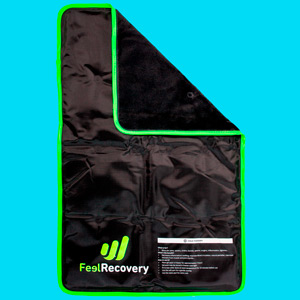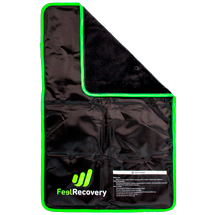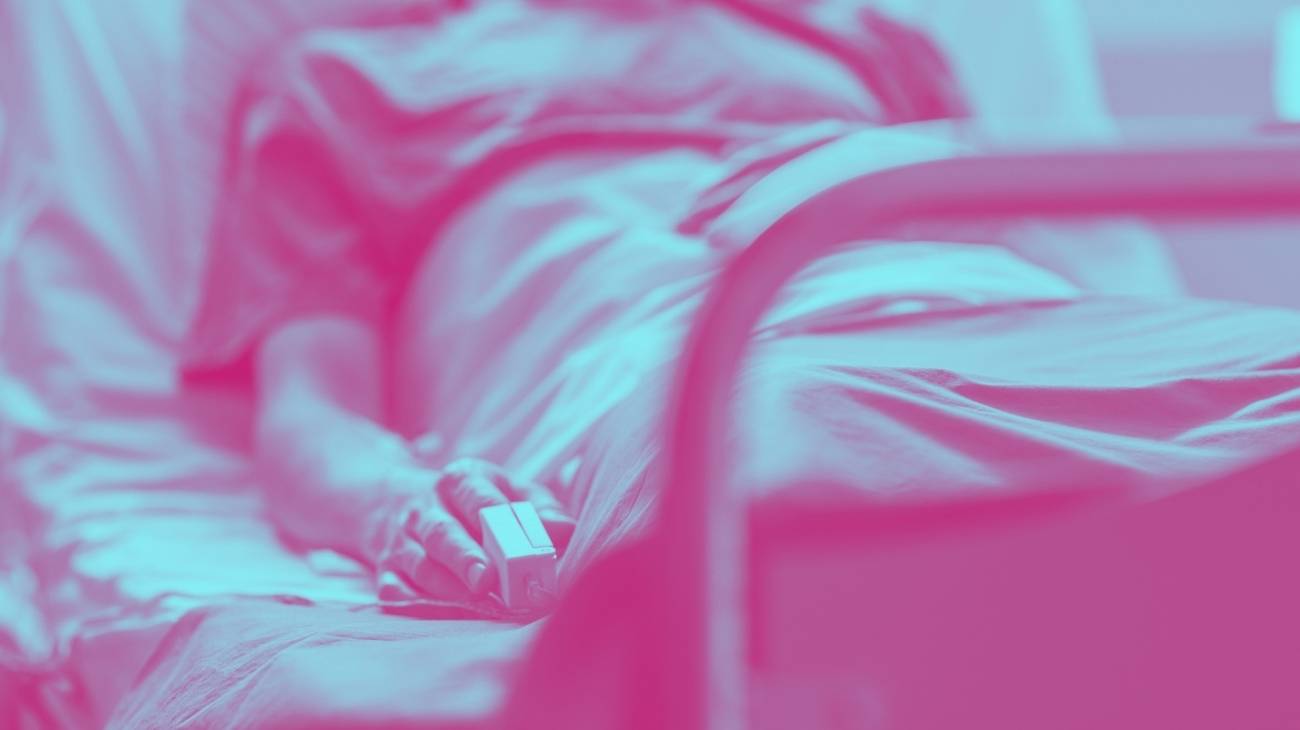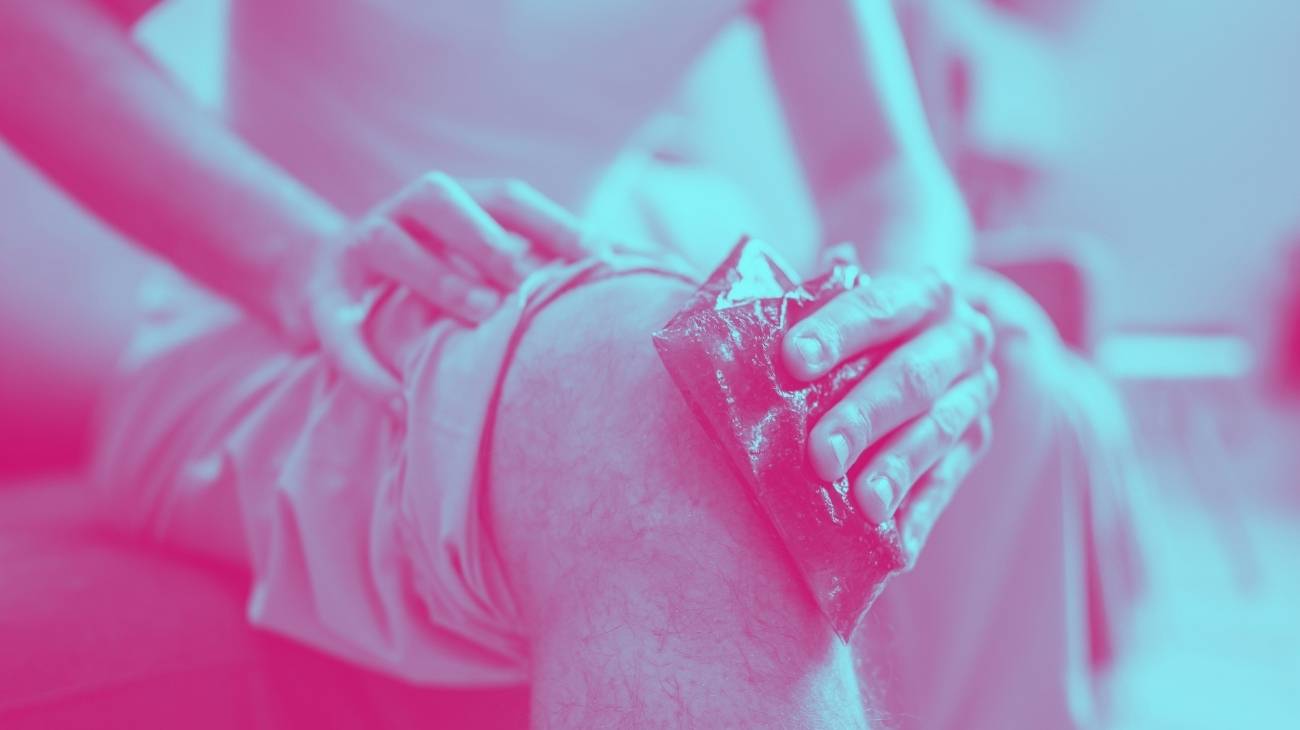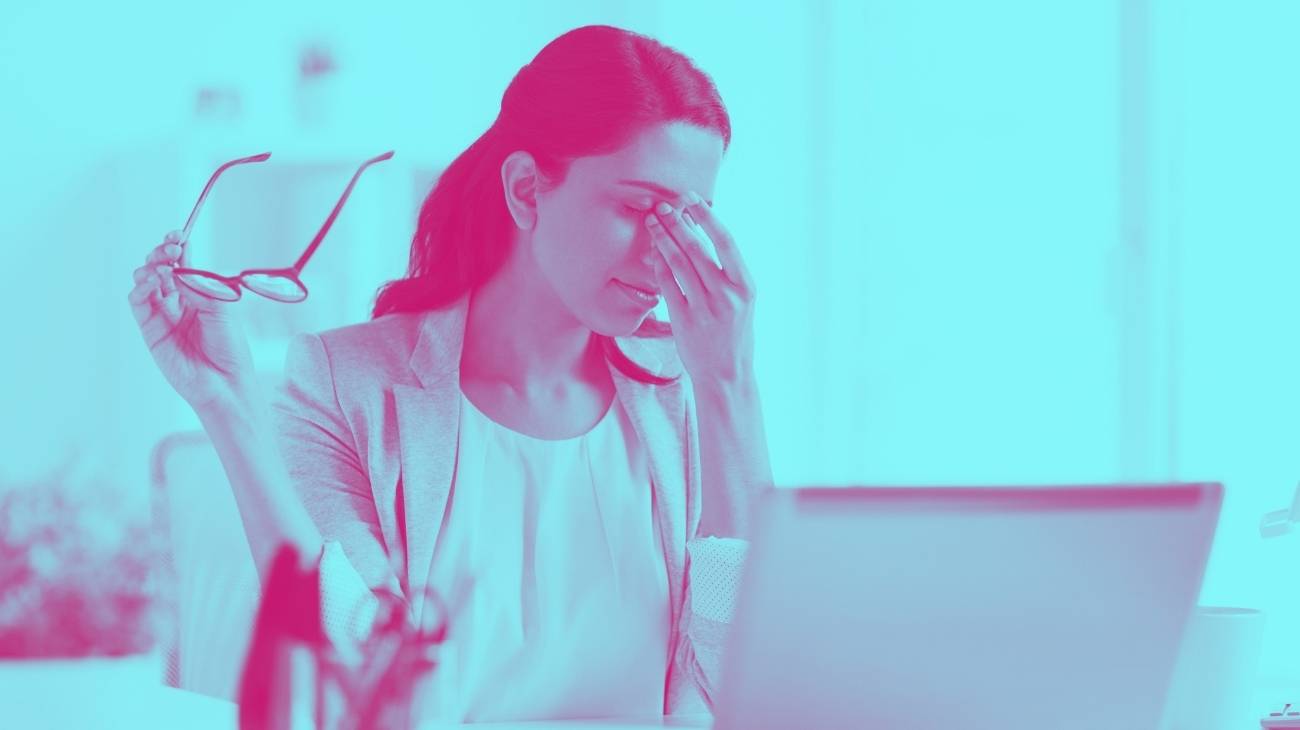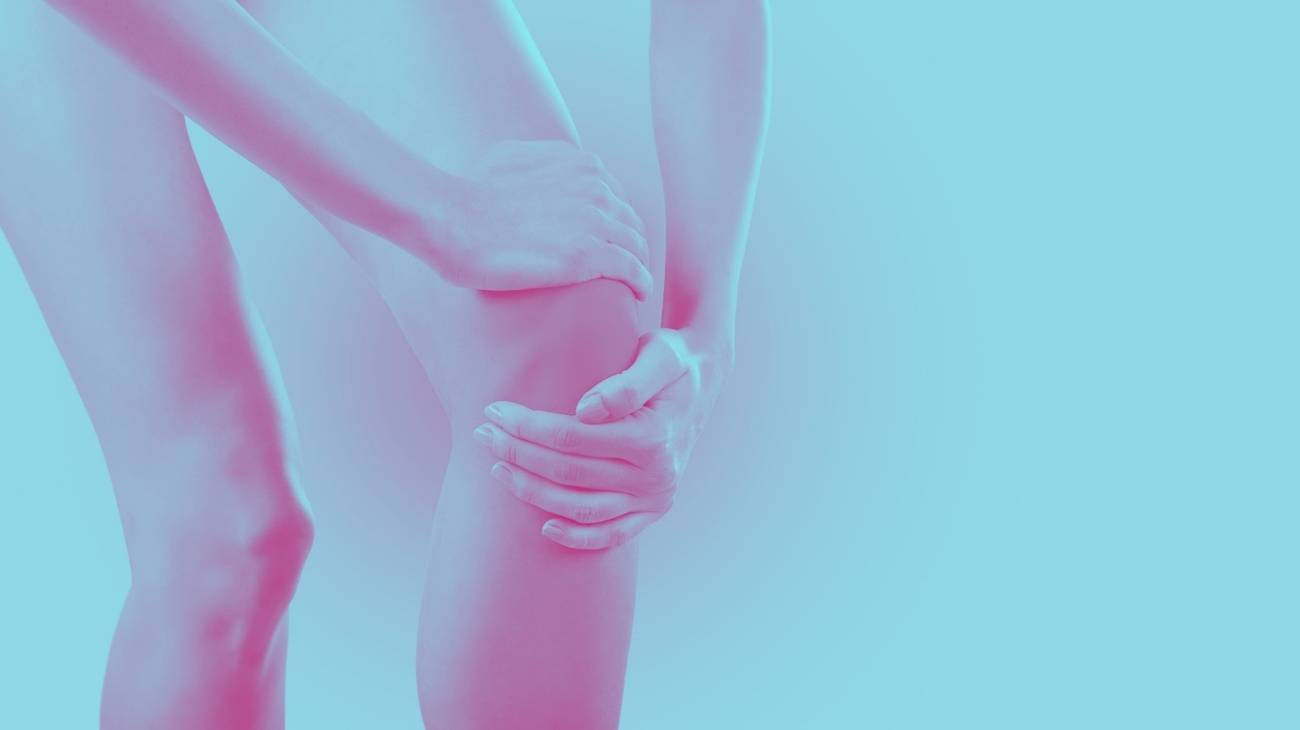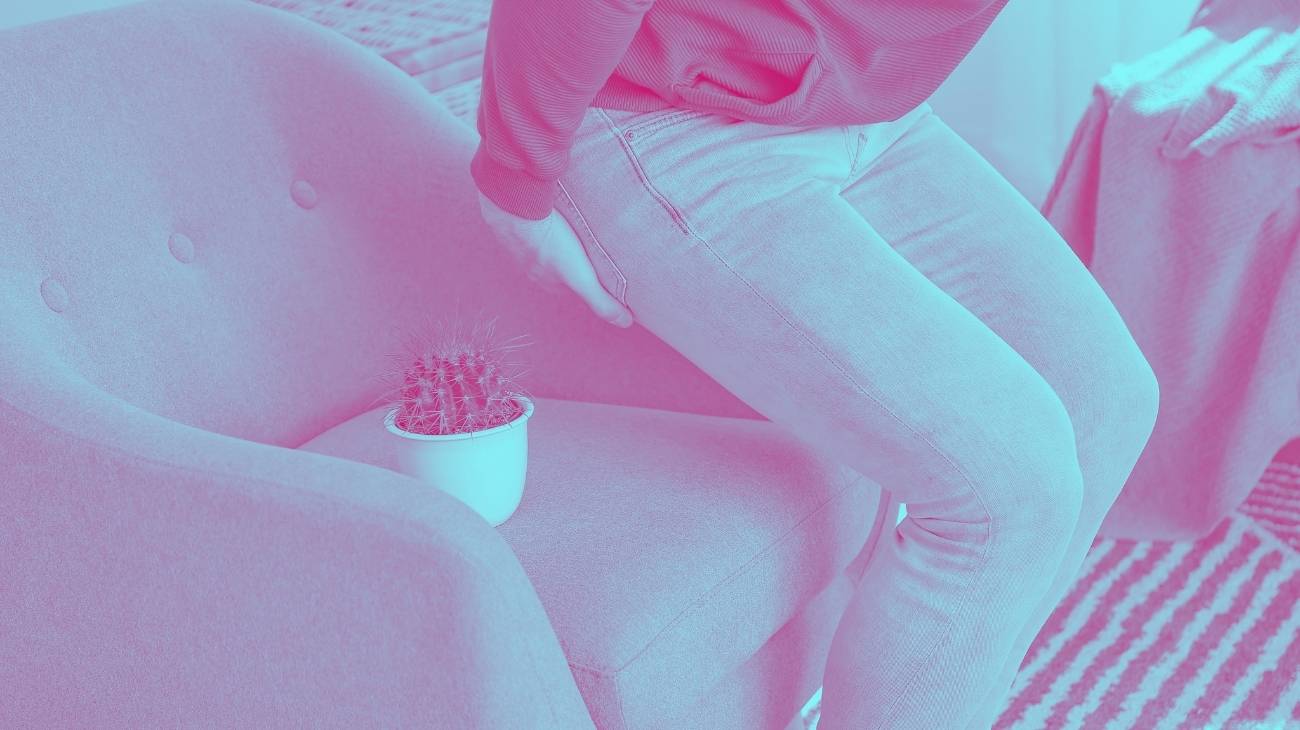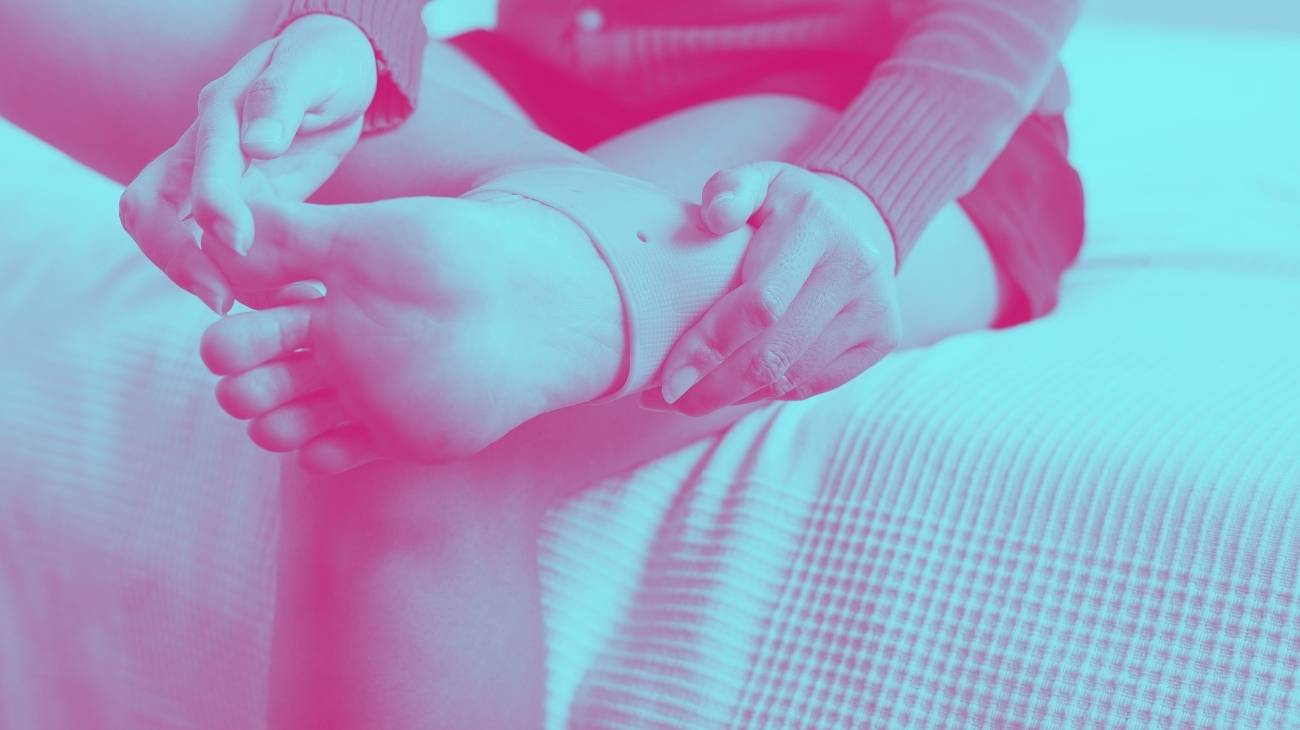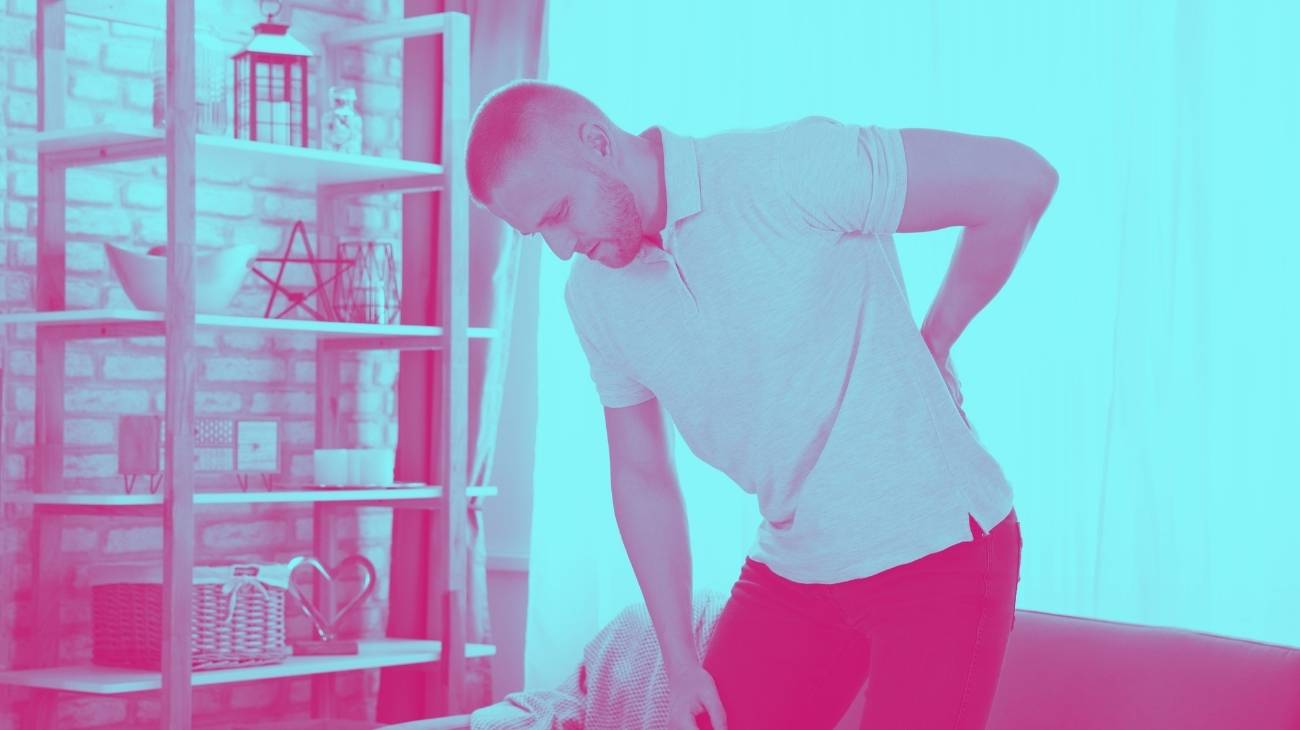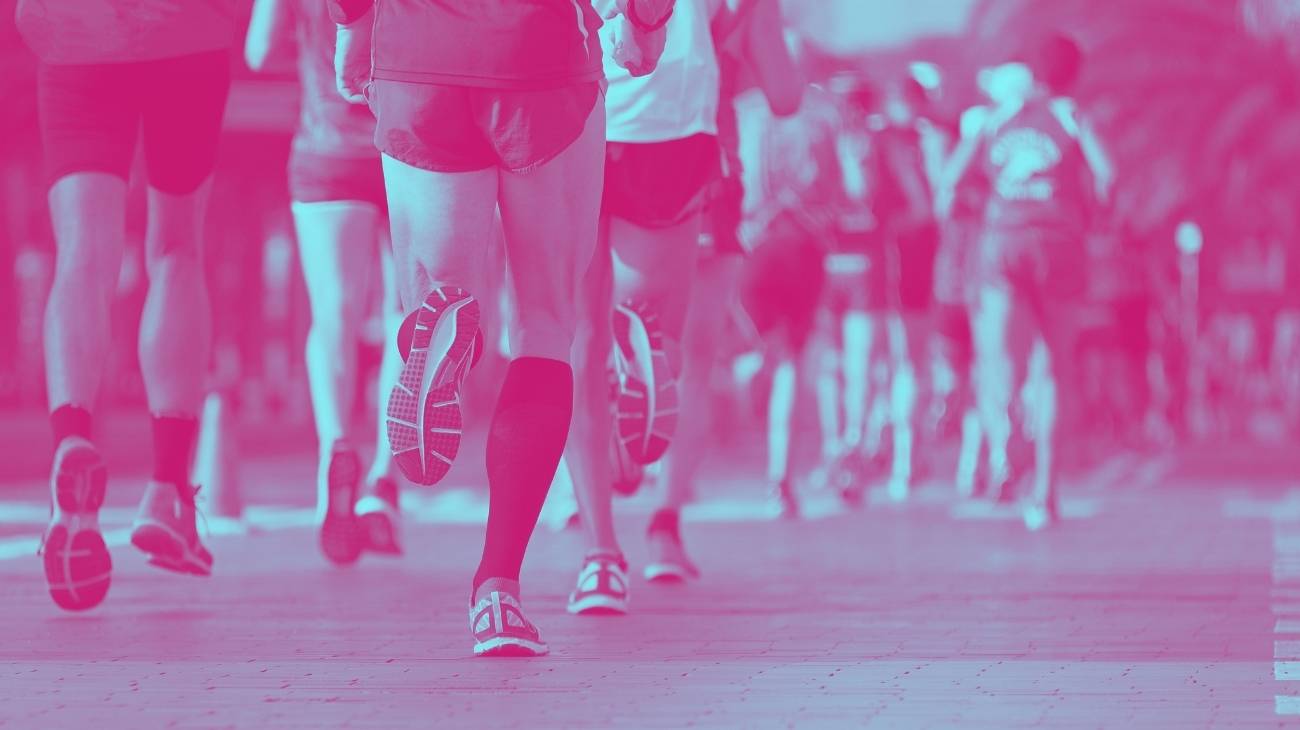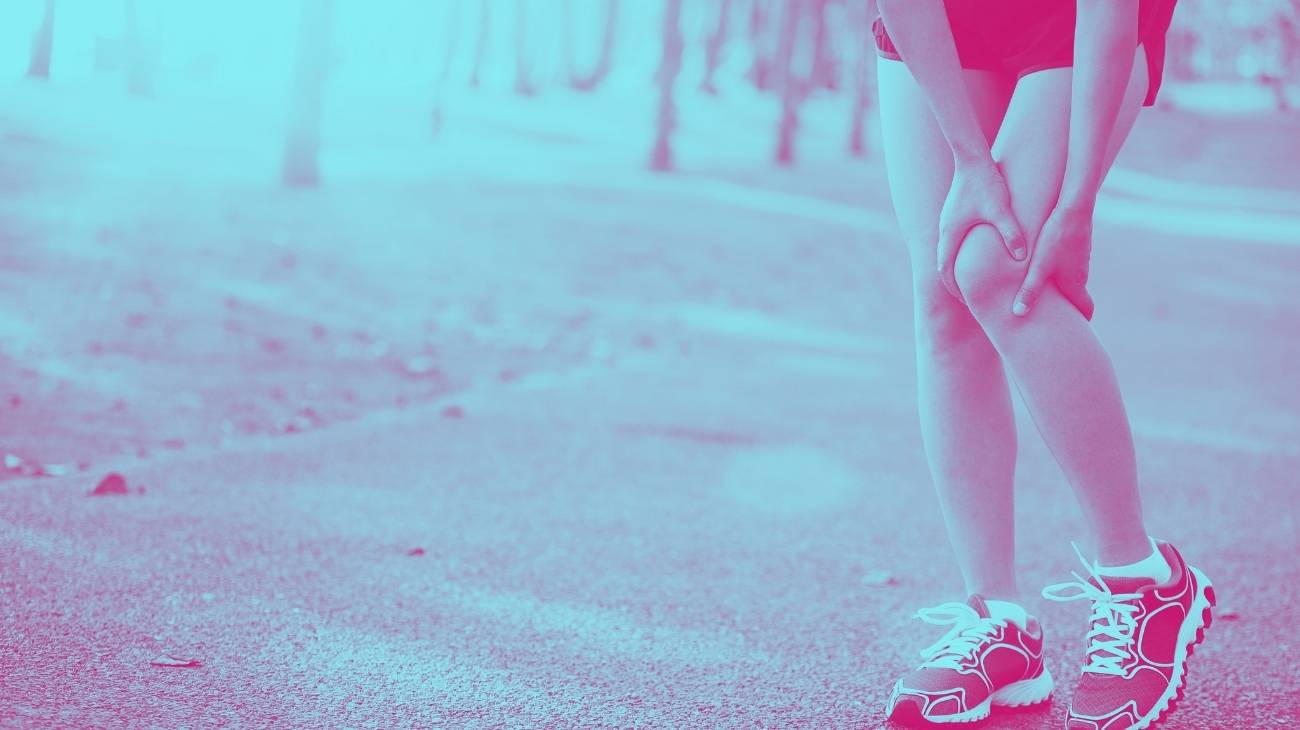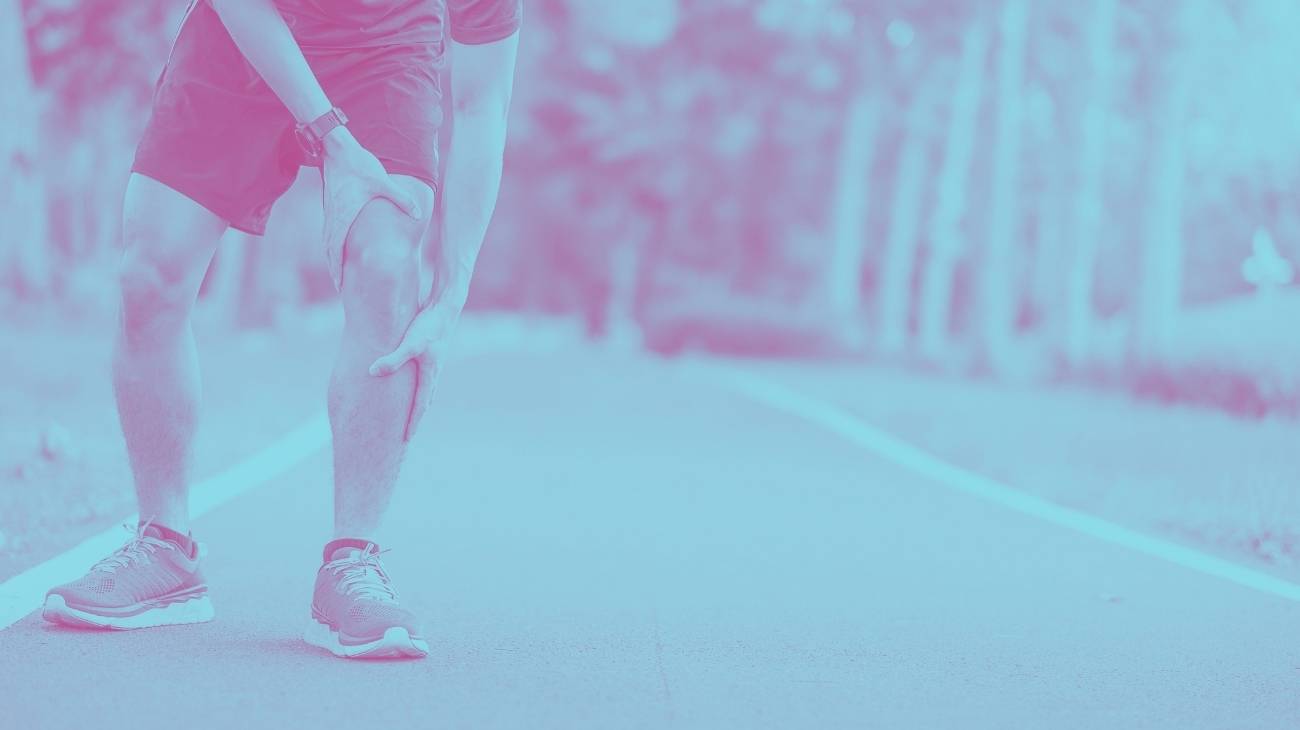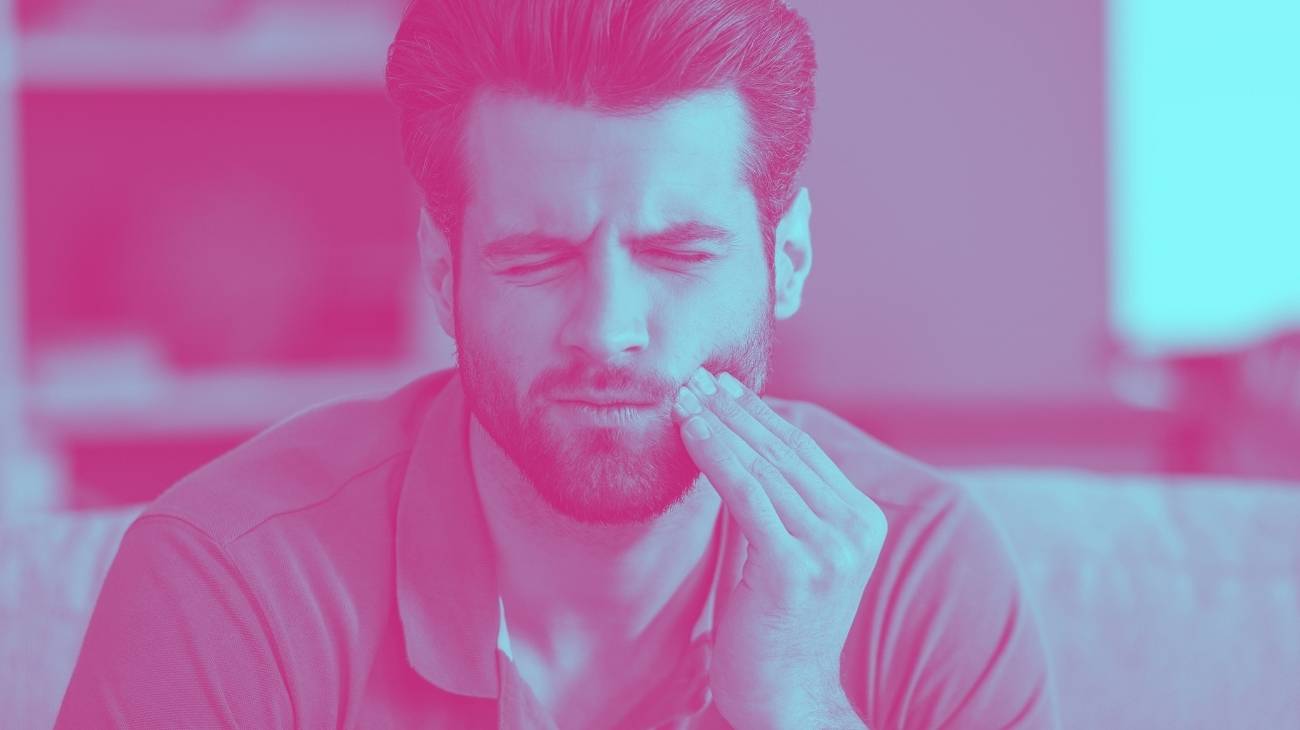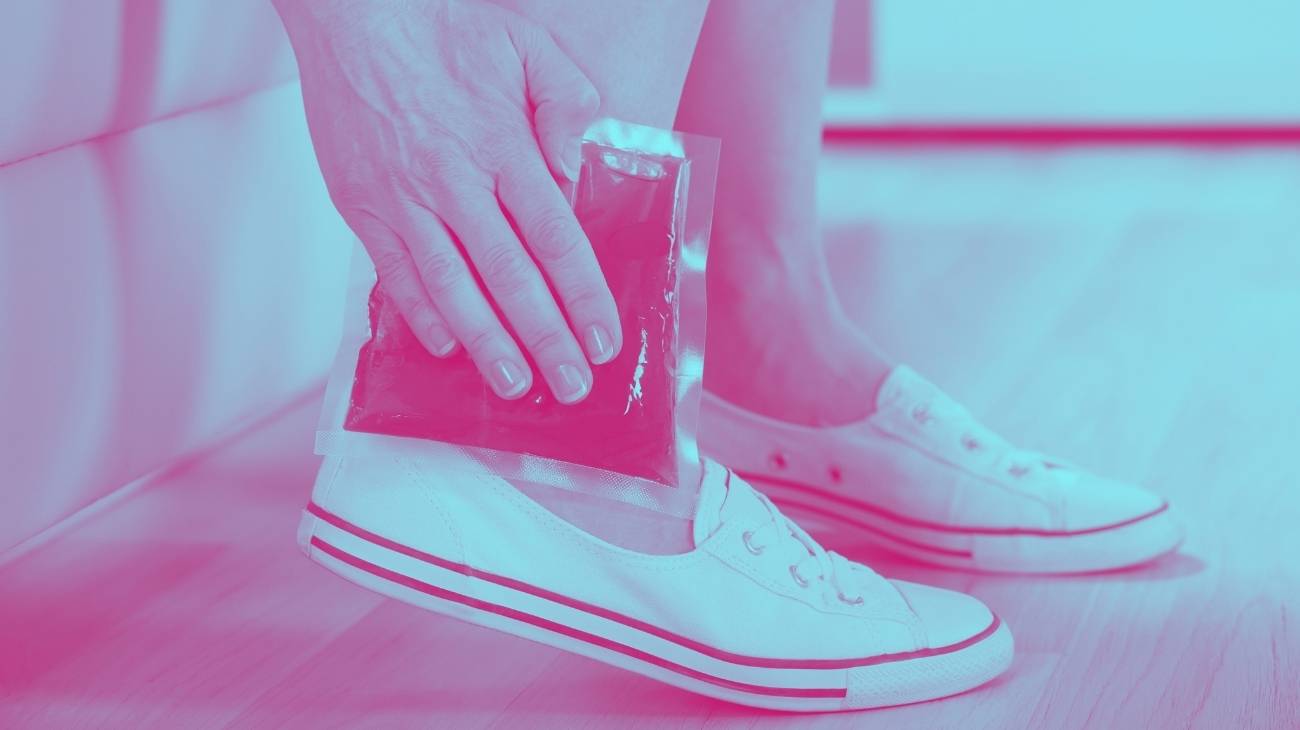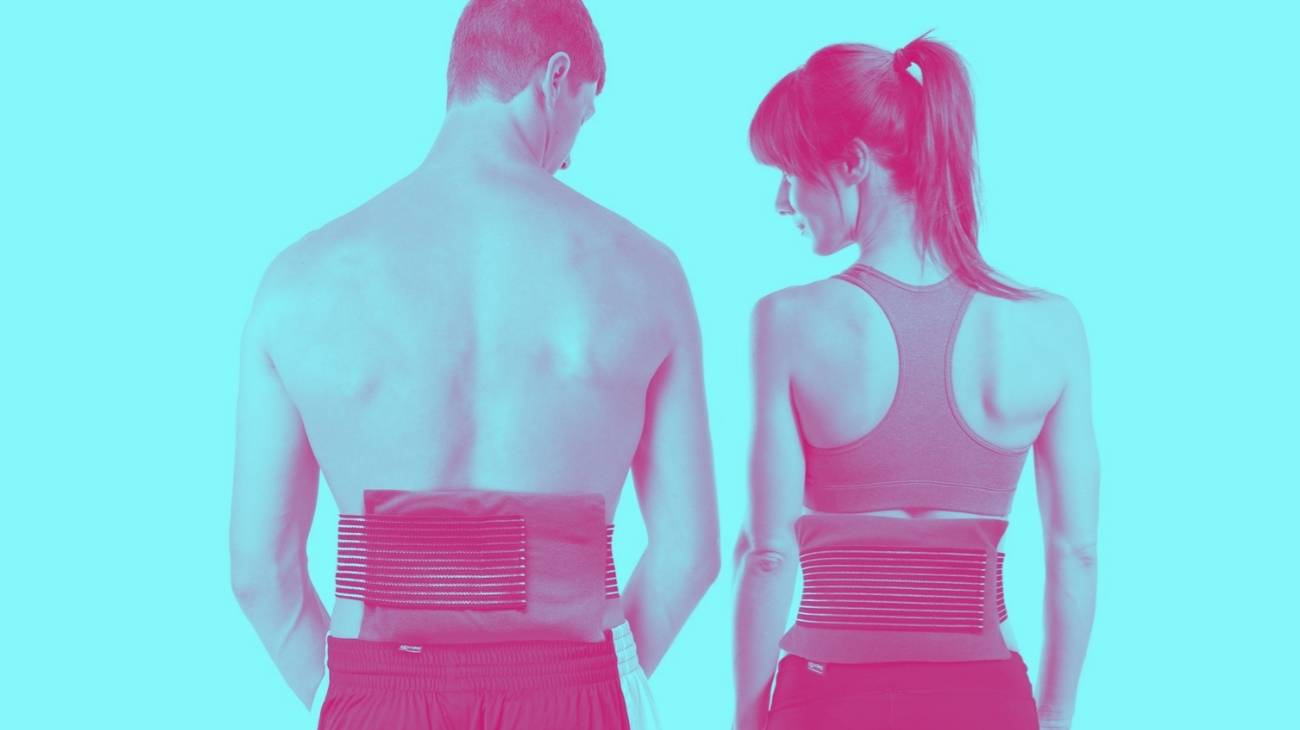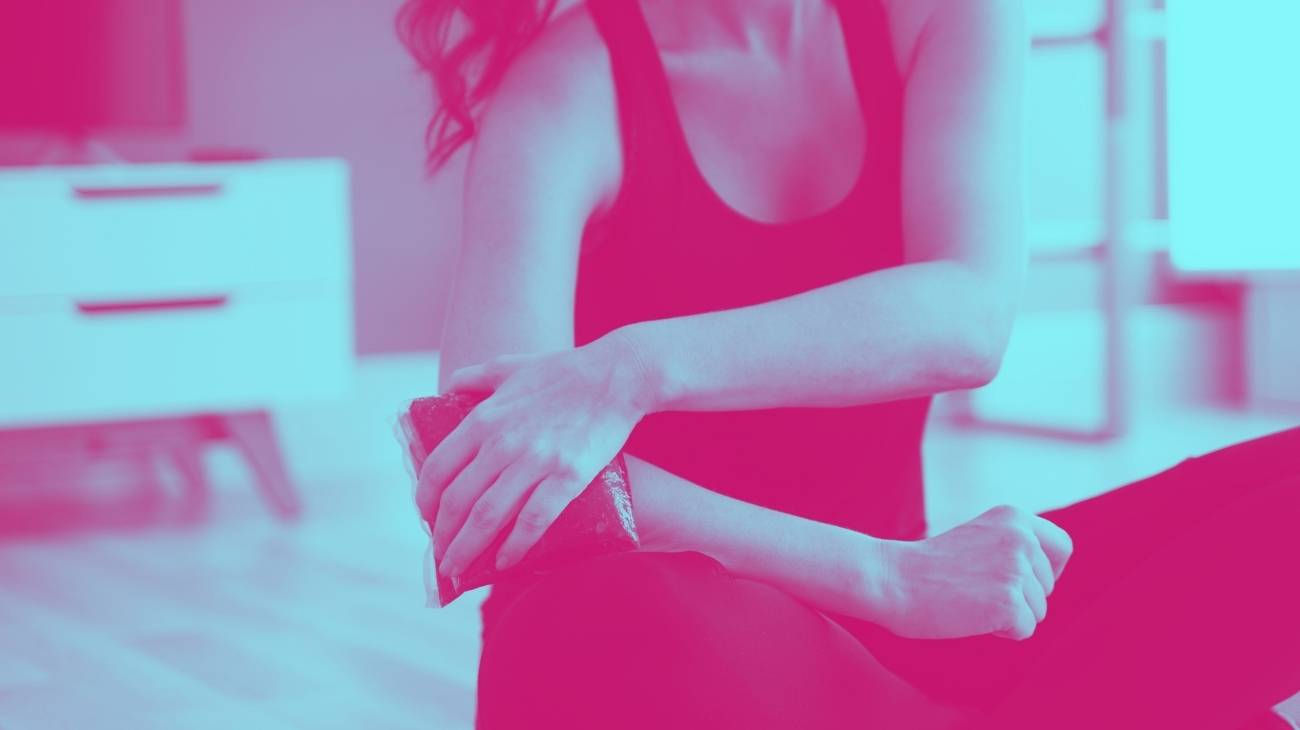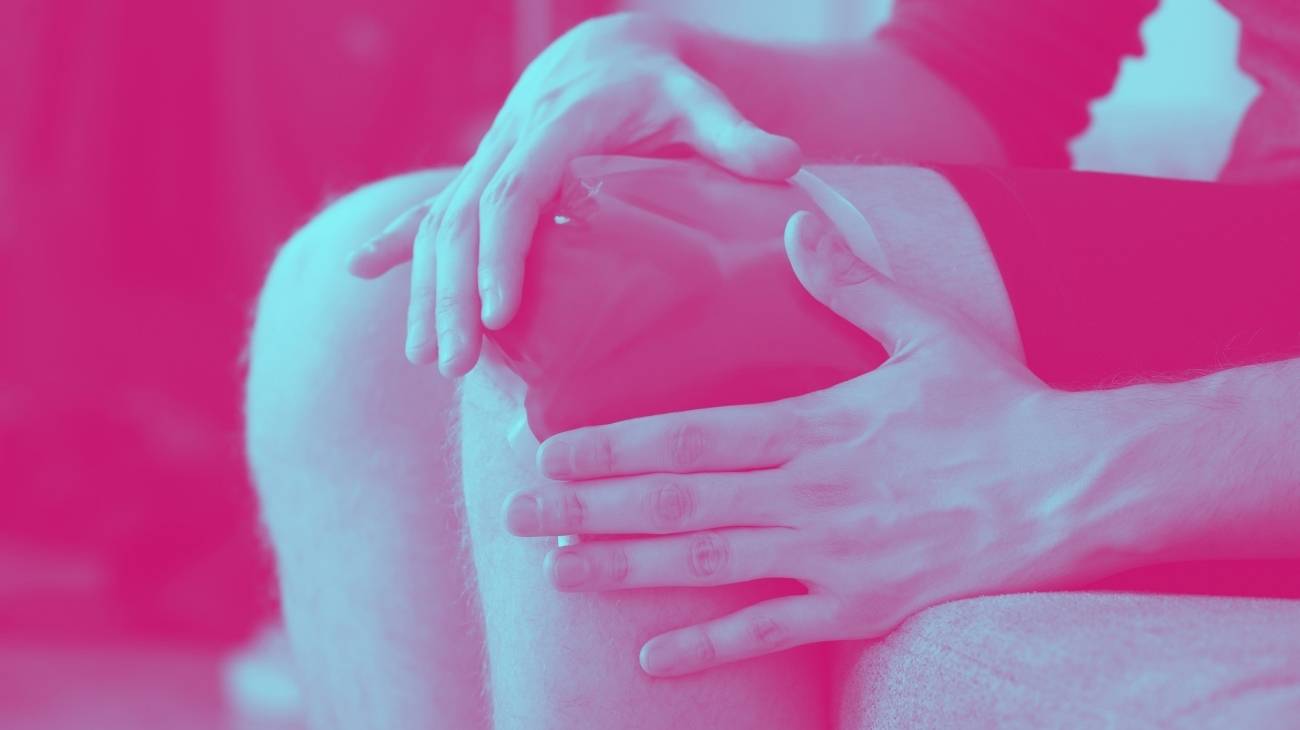- What is the best ice gel pack for menstrual cramps?
- Video: How to use hot and cold gel packs?
- Types of hot & cold packs you should know about
- What are the causes of menstrual cramps?
- Which relieves the pain of menstrual cramps better: cold or heat?
- How to use hot & cold gel packs to relieve menstrual cramps?
- The best hot and cold gel packs for pain relief
Hot and cold gel packs are a very convenient and effective solution to relieve the pain of menstrual cramps and cramps. As we know, most women struggle with menstrual cramps throughout their lives.
They usually occur 6 months after the first period and cause discomfort one week before each menstrual cycle. During the first 3 days of the period, the pain intensifies and can interfere with activities of daily living.
What is the best ice gel pack for menstrual cramps?
- Size: One size
- Colors: Black and Green
- Material: Breathable
- No. of products: 1 Piece
- Uses: Rehabilitation and sports
- Always Flexible
- Highest Quality
- Large Size
- Soft Fabric
- Ergonomic design
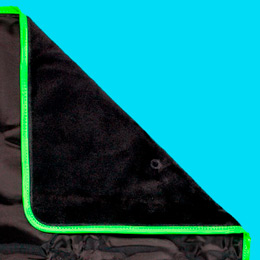
Highest Quality
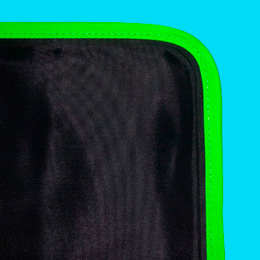
Soft Fabric
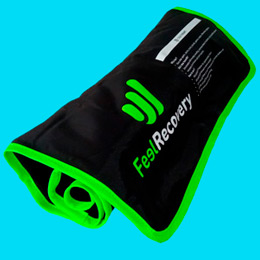
Always Flexible
- Material: Nylon
- Uses: Lower back
- Type of adjustment: Velcro strap
- Cover: Yes
- No. of units: 1 Gel Pack
- Velcro strap
- 1 Gel Pack
- Hot/cold therapy
- Fully adjustable
- Little flexibility with cold therapy
- Not microwaveable
The ice and heat packs are removable and can be placed in the refrigerator or microwave, depending on the therapeutic benefit you are looking for. The neoprene sleeve is flexible and does not deform during use, which aids in better adaptation to the tender points of the lumbar region. Please note that, in some patients, the support was not ideal to stabilize the joint.
- Material: Nylon
- Uses: Various body areas
- Type of adjustment: None
- Cover: Yes
- No. of units: 1 Gel Pack
- Hot/cold therapy
- Suitable for various body areas
- Not microwaveable
You will find great benefits in this pad, for example, the ease in achieving the desired therapeutic temperature. Just place in the microwave for a few seconds or chill in the refrigerator for at least two hours and that's it! Its design does not deform, which helps to a better adaptation in women and men, but too hot peel can cause skin burns.
- Large size
- Suitable for various body areas
- Cold therapy only
It is recommended to be used for arthritis, sciatica and menstrual pain, although you can also use it to relax the shoulder muscles, due to the extra large size of the thermal blanket. Its structure does not deform with use and, thanks to the quality of the seams and materials, it is not uncomfortable during therapeutic sessions. It has the advantage of being able to be used anywhere on the body, but it does not generate compression, since it does not have adjustable straps.
- Material: Nylon
- Uses: Lower back
- Type of adjustment: Velcro strap
- Cover: Yes
- No. of units: 1 Gel Packs
- Adjustable Velcro strap
- Includes 1 Gel Pack
- Hot/cold therapy
- Quality finishes
- Delicate wash
- Not microwave safe
The size encompasses strategic areas of the hip, which enhances dilation and helps facilitate ease of use. Freeze in the refrigerator and microwave the removable pouches to place on your back for pain relief. You won't need anyone's help because its ergonomic design will easily adapt to your anatomy. In some cases, the Velcro loses quality after a few weeks of use.
- Heat/cold therapy
- Quality adjustable strap
- Not microwave safe
Its straps and ergonomic design do not deform during use, maintaining its position throughout the treatment. This increases comfort and makes it easier to treat symptoms of tendonitis, bursitis and trauma. Heat the pad in the microwave or cool the heat pack in the refrigerator to place on sensitive areas to reduce inflammation. In some cases, the duration of the temperature may not be long enough.
- 2 Units per order
- Protective cover
- Hot/cold therapy
- Adjustable strap
- Not very flexible after freezing
- Not microwaveable
The medical gel pad can be used for meniscus inflammation, patellar tendon rupture and ligament irritation. It is necessary to heat in the microwave or refrigerate in the fridge the filling in the removable package until the desired temperature is reached. Then, you will have to place it in the sleeve and adjust the straps so that the compression improves blood circulation. In some patients the effects were poor due to the lack of support to see the product in the sensitive areas.
- Material: Nylon
- Uses: Back, Ankle, Knee, Shoulder
- Adjustment Type: Velcro Strap
- Cover: Yes
- No. of units: 1 Gel Pack
- Hot/cold therapy
- Adjustable Velcro strap
- Microwaveable
- Good flexibility
- Short-lasting heat therapy
- Delicate wash
Arthritis, golfer's elbow syndrome and inflammation from trauma can be easily treated with this recovery support . Place in the refrigerator or freezer to get the temperature you're looking for and then place it on the side of your elbow to help you recover faster. Sweat buildup can be uncomfortable for some users and cause shifting during use.
- Material: Nylon
- Uses: Various body areas
- Type of adjustment: Velcro strap
- Cover: Yes
- No. of units: 2 Gel Packs
- Adjustable Velcro strap
- 2 Units per order
- Bulky design
By simply placing it in the microwave or freezer, according to your needs, you will achieve the ideal combination to combat radial tunnel syndrome, tennis elbow and bursitis. The medical gel packs are reusable, but keep in mind that for best results you will need to use it with a compression sleeve, which may be ineffective for some users.
Video: How to use hot and cold gel packs?
Types of hot & cold packs you should know about
What are the causes of menstrual cramps?
Dysmenorrhoea or menstrual cramps is a disorder of the female reproductive system characterised by menstrual pain. Although it is a common condition, it affects only 30% of women of childbearing age. It is important to know that this condition is more common in younger women and usually disappears with time. In some women, the condition has even improved after the birth of their first children and has not recurred at all.
However, to recognise this disorder, you need to know some important facts. The uterus is covered by a layer of tissue called the endometrium, which normally grows month by month to accommodate the fertilised egg. If fertilisation does not occur, the lining of the uterus breaks off and is expelled, causing menstrual bleeding.
In order for the uterus to empty itself of this tissue, it must contract. At this moment, the body begins to release chemicals such as prostaglandins, which trigger contractions similar to childbirth. The intensity of the contractions varies from woman to woman, some experience mild contractions, others very strong.
Two types of dysmenorrhoea have been distinguished, primary and secondary, and their possible causes have been identified:
Primary dysmenorrhoea
Primary dysmenorrhoea is the most common form of the condition. It begins in adolescence and improves with time and the birth of a child. In this case, there is no pre-existing disease that could be the cause of the pain during menstruation.
Excessive production of prostaglandins, chemicals that cause pain, is associated with this condition. As mentioned earlier, prostaglandins cause contractions that lead to cramps. In primary dysmenorrhoea, the pain can start a few days before the period begins. Usually it only lasts a few days, but there are also reports that the pain lasts longer.
It is often associated with certain risk factors, e.g.
- Menarche or first menstrual period before the age of 11 or very long and heavy menstrual periods.
- Smoking and drinking habits during menstruation.
- Women who are overweight or very underweight.
All of these risk factors are associated with chronic inflammatory processes that lead to an increased release of prostaglandins.
Secondary dysmenorrhoea
In secondary dysmenorrhoea, menstrual pain is often associated with other diseases of the female reproductive system. It usually occurs years after the first period. It is a pain that may occur a few days before menstruation and continues after menstruation ends, and may get worse over the years.
The most common causes of secondary dysmenorrhoea are:
- Uterine fibroids or fibroids: These are tumours that develop in the uterus and are benign, i.e. do not cause cancer. They are very common and can occur on the walls of the uterus, on the surface that lines the inside or outside of the uterus. They are caused by hormones or a genetic predisposition.
- Ovarian cysts: These are small fluid-filled sacs that can appear in the ovary or on its surface. They can appear during the menstrual cycle and disappear spontaneously without causing any discomfort. However, some can cause serious symptoms, especially if they rupture.
- Pregnancies and miscarriages: Both are often confused with painful menstruation. An ectopic pregnancy occurs when fertilisation has taken place outside the uterine cavity. And a miscarriage is the loss of the product of conception, which is accompanied by pain and heavy vaginal bleeding.
- Infections: Infections of the uterus are another cause of severe dysmenorrhoea. An infectious process leads to inflammation and thus pain, especially during the menstrual cycle.
Which relieves the pain of menstrual cramps better: cold or heat?
Medications such as painkillers can be effective for menstrual cramps. However, if you are one of those who prefer other alternatives rather than medicines, you should find out about heat and cold therapies.
Advantages of cold therapy
Cold has been used since ancient times to inhibit inflammation and relieve pain from musculoskeletal conditions. In this method, the affected areas are treated with low temperatures for a period of 10 to 20 minutes.
Its benefits are felt immediately after application, including the following:
- Pain relief: Within a few minutes of applying the cold, you may notice that the pain eases. This is because the cold causes a decrease in peripheral nerve activity. This is related to the reduction in blood flow caused by the cold in the tissue where it is placed.
- Reduction of inflammation: The spontaneous effect of cold on blood flow is to reduce it locally. This prevents pro-inflammatory elements in the body from reaching the site of injury. It also reduces tissue metabolism and thus prevents inflammation.
- Prevents tissue damage: When cold works, it slows down the physiological processes of tissue breakdown. When applied locally, it prevents further damage and provides faster improvement of the injury and adjacent soft tissue.
Menstrual cramps cause contraction of the smooth muscles of the uterus, which causes pain. Although cold is very effective for musculoskeletal disorders, heat is much more effective for dysmenorrhoea.
Advantages of heat therapy
Heat, like cold, has an excellent effect on pain of all kinds. Its main property is that it relaxes muscles, ligaments and tendons and helps to improve tissue circulation. As heat is a vasodilator par excellence, its use is not recommended in acute inflammatory processes.
Some of its advantages are as follows:
- Improves muscle spasms: When heat is applied to the pelvic area, it locally increases blood flow. This leads to increased blood flow, which delivers more oxygen and nutrients to the tissues. In this way, the pain is significantly improved.
- Relaxes the tissues and gives them back their elasticity: The warm temperature leads to a better relaxation of the tissues, especially the muscles. This is an excellent option for dysmenorrhoea, as the relaxation of the uterus considerably relieves the pain.
- It produces a feeling of well-being and comfort: the increased blood flow to the affected area improves the supply of oxygen and nutrients to the tissues. This allows for a faster and more satisfying recovery from menstrual cramps or discomfort.
How to use hot & cold gel packs to relieve menstrual cramps?
As we have already explained, it is best to use heat to relieve menstrual cramps and pain. Our gel packs are not designed to be used with heat, but they can be warmed if needed. There are two ways to do this: in the microwave or in a water bath. We explain the correct procedure in detail here.
Heating in the microwave is quite simple, you will find that it is very easy:
- First place the gel pack in the microwave at 800 W for 30 seconds. Sometimes the power of the microwave is not enough, in which case it is best to adjust the seconds until the correct temperature is reached.
- After the seconds have elapsed, remove the appliance to check the temperature by touching it. It is necessary to massage the gel pack so that the heat is evenly distributed in the pack.
- If it is not heated sufficiently, put it back in the microwave and heat it for another 10 seconds.
- If it has overheated, remove it from the microwave immediately and let it rest. When it has cooled completely, the heating process should be repeated.
- When the temperature feels right, place the bag on its stomach. It is placed for 10 to 15 minutes and repeated every hour for the duration of the period. Our packs do not require wipes or protective covers, they can be used directly.
- The heating process of the gel pack should always be monitored. It may happen that the pack expands, which means that the temperature of the pack has exceeded the recommended temperature. In this case, remove the gel pack and wait until the temperature has dropped and cooled down before repeating the process.
- If the gel pack breaks, remove it from the microwave, allow it to cool completely and discard it.
- Do not heat a frozen gel pack, always wait until it is at room temperature.
- Never attempt to heat a gel pack in the oven.

